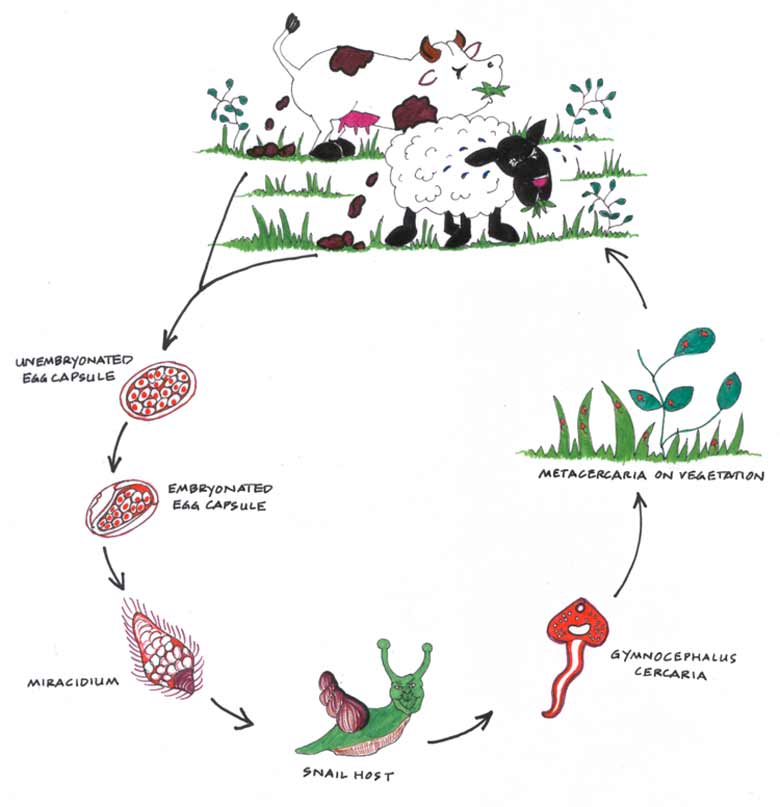
Fasciola hepatica infects numerous mammals, especially cows, sheep and other ruminants, existing in the bile passages of the liver. The egg capsules are passed via bile to the small intestine, travel through the large intestine to ultimately be deposited into the environment through feces. Should the feces be deposited in water, the egg capsules will embryonate and in about 9-10 days in warm weather, hatch, liberating the miracidium. This ciliated, non-feeding larvae will seek out snails of Stagnicola bulimoides or Fossaria modicella in the US but other related snails in other parts of the world. Within the snail host, the miracidium transforms into a sporocyst which in turn produces redia known as mother redia since they will produce daughter redia. These intramolluscan stages will give rise to cercaria of the gymnocephalus type which contain cystogenous glands that enable them to form encysted metacercaria on vegetation or in the water. Should the metacercaria-infected vegetation end up "high and dry" and be eaten or should the host drink the metacercaria-contaminated water, these minute, immature worms excyst in the small intestine, penetrate the lining of the intestine and creep over internal organs till they find the liver. There the young worms will invade the capsule of the liver and wander about through the hepatic cells, feeding and growing until they enter the bile ducts about 2 months post-infection. About one month after entering the liver, the worms attain adulthood and begin producing egg capsules.